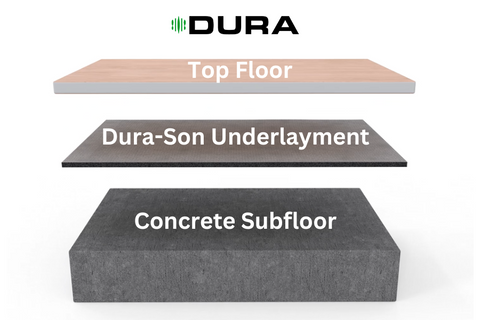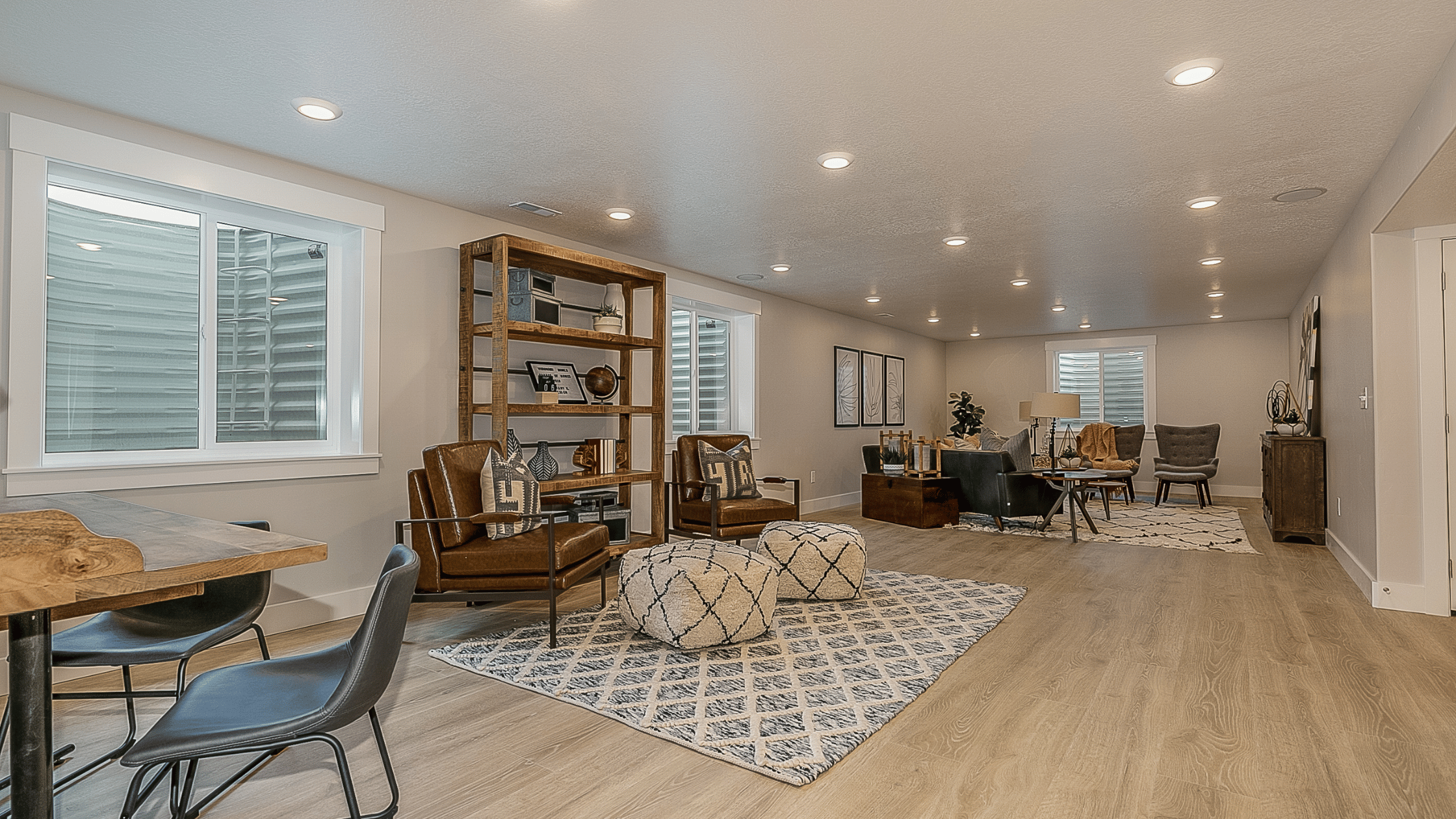Selecting the Correct Acoustic Underlay Is Crucial
An essential element in the building and remodeling of sound-sensitive areas is acoustic underlayment. The correct acoustic underlay can make a big difference whether you're upgrading a recording studio, remodeling a workplace, or building a new house. To assist you in making an informed choice, we'll go over the fundamentals of acoustic underlayment in this article and address frequently asked topics.
What is an Acoustic Underlay?
Acoustic underlay, also known as acoustic underlayment, is a layer of material placed between the subfloor and the finished flooring. Its primary purpose is to reduce noise transmission between floors, providing sound insulation and enhancing comfort. Acoustic underlay comes in various materials, including rubber, foam, cork, and felt, with rubber providing the best performance for the lifetime of your flooring system.

How Does an Acoustic Underlay Work?
Sound waves are absorbed and dampened by an acoustic underlay. It stops impact sounds from reverberating throughout the building, such as footsteps and dropped objects. Impact Insulation Class (IIC), a rating system that shows how well acoustic underlay reduces sound transmission, is used to quantify this absorption. The underlay's ability to block noise increases with its IIC rating.
Which Type of Acoustic Underlay Is Best?
The ideal acoustic underlay for you will rely on your unique requirements. Here are some things to think about:
- Material: Rubber underlayment is the most effective in terms of comfort, sound absorption, and durability.
- IIC Rating: Be wary of advertised ratings, even though higher IIC ratings typically correspond to superior noise suppression. To make sure the rating is accurate and relevant, ask to see the test report, which includes the testing conditions and the test date.
- Application: Take into account the kind of flooring you have (carpet, laminate, hardwood, tile, etc.) and make sure the underlay is compatible with it. Underlays that advertise that they fit all types of flooring should be avoided as they will not deliver optimal performance.
Rubber vs. Foam Underlays: Which is Better for Sound Insulation?
Foam loses its compression resistance over time, providing limited and temporary soundproofing properties, while rubber underlays provide exceptional sound insulation for the lifetime of the flooring installed above it. Rubber outperforms foam in durability, acoustics, and comfort properties. Rubber underlays offer a denser material choice which translates to better soundproofing qualities. This makes it an ideal choice for locations needing superior noise control, such as high-traffic areas and multi-story buildings.
Does the Type of Underlay Really Matter?
The performance of your flooring can be significantly impacted by the underlay type you select. The rubber underlay from Dura Undercushions is the finest option for your flooring because of its open-cell structure, which not only delivers superior sound insulation but also has antibacterial qualities and is compatible with radiant heated floor systems.
The Benefits of Open-Cell Rubber Underlays from Dura Undercushions
Open-cell rubber underlayment is an excellent choice for builders looking to enhance floor performance due to its unique structure and properties:
- Superior Sound Insulation: The interconnected cells of open-cell rubber allow air to flow through, enhancing sound damping. This is ideal for reducing noise in high-traffic areas and multi-story buildings.
- Enhanced Comfort: Less dense and more flexible, open-cell rubber underlayment compresses easily underfoot, providing a softer and more comfortable walking experience.
- Improved Moisture Protection: Its porous nature allows it to absorb and retain moisture, protecting floors in humid environments like kitchens and basements.

Does an Acoustic Underlay Really Make a Difference?
Indeed. By installing a premium acoustic membrane from Dura Undercushions, you can create a quiet sanctuary in an otherwise noisy space. Because of its ability to effectively block and absorb sound, it is a crucial part of contemporary flooring systems, particularly in structures where echo and reverberation must be managed.
Which Underlayment Do I Need?
Rubber underlays are the best option for people who value longevity and acoustic performance. Check out our product selector tool now to start simplifying your project! With its premium rubber composition, Dura Undercushions’ underlayment in particular offers unparalleled advantages, making it the ideal choice for every flooring application.
Why Dura Undercushions is the Optimal Choice
When it comes to selecting an acoustic underlay, Dura Undercushions is unrivaled in quality and performance. Its open-cell rubber technology sets it apart in the industry, offering unmatched sound insulation, durability, and overall flooring comfort. Whether you are renovating your home or designing a commercial space, choosing Dura Undercushions means opting for peace of mind and top-notch floor performance.
For more information on how Dura Undercushions can transform your space with the best acoustic underlay solutions, contact our experts today!













